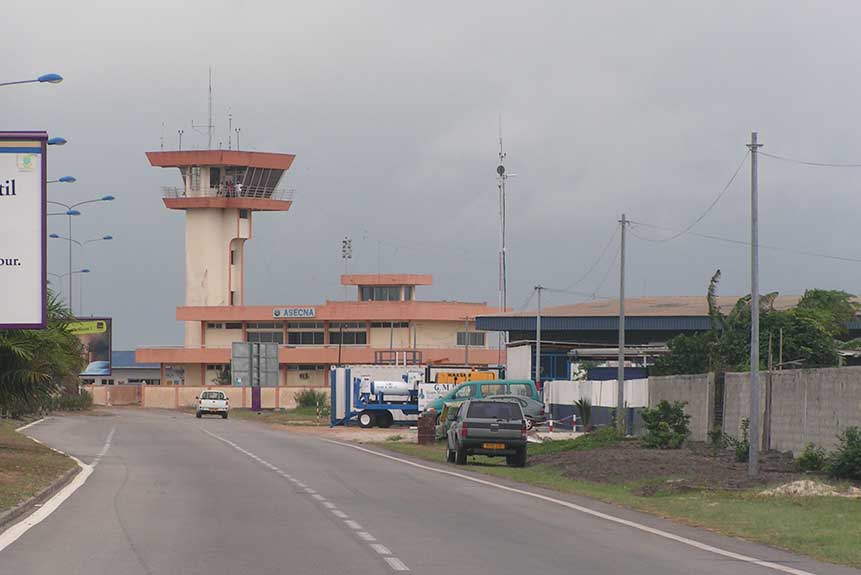
China Sets Sight on Gabon for Second African Military Base
By Jacob Zenn
Gabon’s Port Gentil is the country’s second largest city and its airport and seaport will likely increasingly host military and business visitors from China as China courts Gabon as a close partner in West Africa.
“The visit of the [Chinese] Peace Ark highlights the friendly relations between Gabon and China, and brings glory and well-being to the Gabonese people.”
Beijing is targeting Gabon to host the second Chinese military base on the African continent, marking its first military base on Africa’s western coast. On 9 October, the Forum on China–Africa Cooperation website published the excerpted Chinese-language article, which highlighted the Chinese naval visit to Gabon. The visit came amid a Chinese push to possibly establish its first military base on the western coast of Africa—and Gabon is a prospect to host this base.[i] The article indicates China’s goal was to cultivate goodwill in Gabon through the visit of its Peace Ark naval hospital ship to Gabon’s Owendo Port in the country’s capital. Among the participants in the farewell ceremony with the Gabonese Navy, for example, were non-military personnel, such as overseas Chinese businesspeople in Gabon, Confucius Institute[ii] representatives, and Chinese diplomatic personnel and medical teams.
The Peace Ark naval hospital ship held joint exercises with the Gabonese Navy on maritime rescue and evacuation between 26 September and 3 October. Yet, the most impactful mission of the hospital ship during the visit to Gabon was related to “soft power,” with it providing medical treatment to 6,934 Gabonese civilians, including 171 surgeries, and delivering four babies. Further, as part of the visit, Chinese medical teams were dispatched from the naval hospital ship to schools to promote health education and to hospitals to support Gabonese doctors, while also playing a friendly soccer match with the Gabonese military.
The Chinese campaign for influence in Gabon differs from Russia, which is unable to provide the same breadth of combined military and medical support to a country like Gabon. China is able to parlay its military support with significant investment, including more than 4 million Euros to Gabon in the weeks prior to this naval hospital ship’s visit to the country, which again Russia is unable to match.[iii] The Chinese campaign in Gabon is seeing results, with the Gabonese president publicly welcoming the Belt and Road Initiative’s expansion into the country.[iv] China is, therefore, primed to increase its influence in Gabon, including potentially establishing a base in the country, while also outflanking other geopolitical powers, such as Russia, for influence in Africa in the long run.
Sources:
““和平方舟”号医院船结束访问加蓬,离港时与加蓬海军举行联合演练 (The “Peace Ark” Hospital Ship Ends Visit to Gabon, Conducting a Joint Exercise with the Gabonese Navy When Leaving the Port),” focac.org, (official website of FOCAC, which is the official forum between all African states except Eswatini and China), 9 October 2024. https://www.focac.org/zfgx/hpaq/202410/t20241009_11504024.htm
The Chinese Navy’s Peace Ark hospital ship slowly sailed away from the Port of Owendo, Gabon, after successfully completing its visit to Gabon. More than 300 people, including Ambassador to Gabon Zhou Ping, Deputy Chief of Staff of the Gabonese Navy Diwaku, embassy staff, overseas Chinese in Gabon, representatives of the Confucius Institute and the medical aid team to Gabon attended the farewell ceremony. This was the first joint maritime search and rescue exercise between the Chinese and Gabonese navies.
In addition to the main platform for treatment, the hospital ship also sent expert teams and patrol teams to local hospitals for diagnosis and treatment The visit of the Peace Ark hospital ship was highly appreciated by the Gabonese government.
Notes:
[i] See: Jacob Zenn, “China’s Initiates Push To Establish A Military Base In Gabon,” OE Watch, 06-2024. https://fmso.tradoc.army.mil/2024/chinas-initiates-push-to-establish-a-military-base-in-gabon/
[ii] China’s Confucius Institutes are often situated at university campuses abroad “to promote the Chinese language and cultural activities among students and researchers” but they “unswervingly” serve the Communist Party’s goals and are, therefore, part of Chinese soft power projection. As a result of Confucius Institutes’ ties with the Communist Party, an increasing number of them have been shut down in the West, but they are still expanding in Africa and the Middle East. Mordechai Chaziza, “China’s Soft Power Projection Strategy: Confucius Institutes in the MENA Region,” Begin-Sadat Center for Strategic Studies, 25 July 2023. https://besacenter.org/chinas-soft-power-projection-strategy-confucius-institutes-in-the-mena-region/
[iii] “Le Gabon attire 4,3 milliards $ d’investissements chinois (Gabon attracts $4.3 billion of Chinese investment),” Agence Ecofin [Cameroon— and Switzerland-based French-language website primarily covering African political economics]. 4 September 2024. https://www.agenceecofin.com/economie/0409-121241-le-gabon-attire-4-3-milliards-dinvestissements-chinois
[iv] See: “(FOCAC) Interview: China is a true friend that stands with Gabon through thick and thin, says Gabonese president,” news.cn [website of the official state news agency of the People’s Republic of China]. 5 September 2024. https://english.news.cn/20240905/11512527b9eb47799078488bbb0c3e31/c.html
Image information:
Image: Gabon’s Port Gentil is the country’s second largest city and its airport and seaport will likely increasingly host military and business visitors from China as China courts Gabon as a close partner in West Africa.
Source: Brian Ecton, https://commons.wikimedia.org/wiki/File:POG-Airport.jpg
Attribution: CC x 2.0
Distribution A: Approved for public release
Categories:
Tags:







